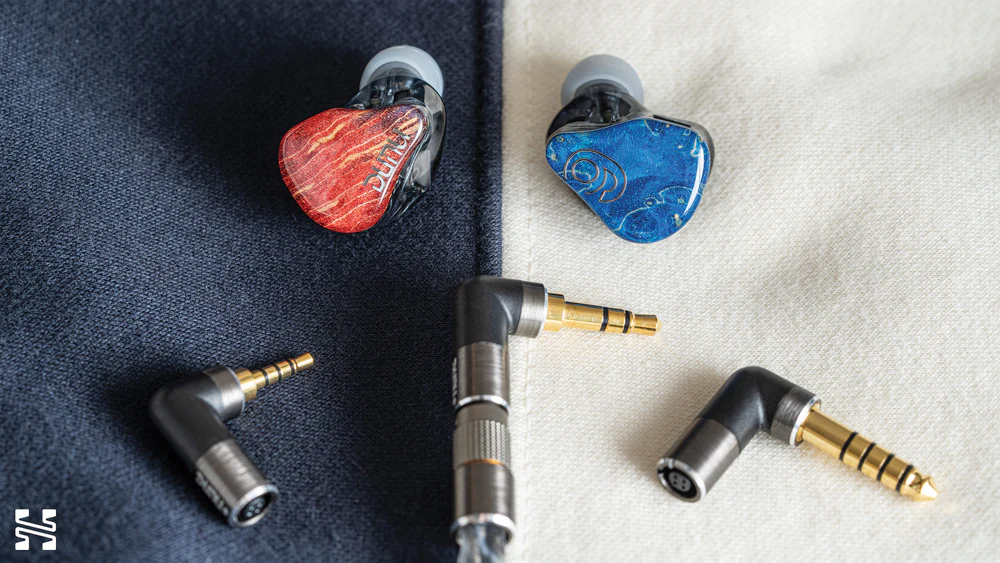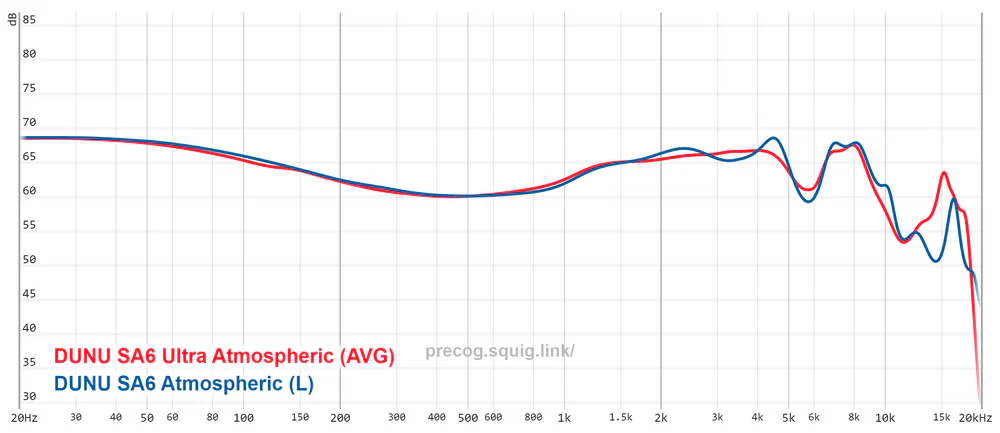DUNU SA6 Ultra Review – You may want it, but you can’t have it

DUNU SA6 Ultra Review – You may want it, but you can’t have it introduction
Released in March 2020, just two years ago, the Crinacle x Fearless Dawn was the first IEM to be reviewed by a team of reviewers. Since then, the number of these IEMs has skyrocketed, and manufacturers have partnered with well-known reviewers to produce IEMs that capture their preferred sound. Therefore, DUNU and YouTube reviewer Zeos collaborated to create the SA6 Ultra. With a slight price increase to $580 USD, it keeps the SA6’s 6BA driver configuration. As always, I have one pressing question: Does the SA6 Ultra live up to the high standards of its superb predecessor, or does it succumb to the all too familiar cycle of upgrades that are “not really an upgrade, just different or worse”?
HiFiGo offered this item for review. Here are my honest thoughts and ideas to the best of my ability, as usual.
Source & Drivability
Using an iBasso DX300 and an iPhone 13 Mini with the included accessories, all crucial listening was conducted. Instead of using the foam ear tips that were given, I used silicone ones. Unless isolation is an issue, silicone ear tips are usually the best option. They will last a lot longer, require less maintenance, and don’t attenuate high frequencies. The SA6 Ultra uses very little power, and I had no trouble reaching my typical listening levels of about 70 dB. There was no hissing. I encourage you to visit this website to find out more about my listening style, test tracks, and general audio beliefs.
In-the-Box
- Leather carry case
- Silicone ear tips s/m/l
- Dekoni Bulletz Foam tips s/m/l
- Cleaning tool & microfiber cloth
- DUNU Hulk Mini cable 0.78mm w/ swappable 2.5/3.5/4.4mm terminations
The SA6 Ultra comes with DUNU’s traditional dark blue leather case. Because of its sleek design and mesh accessory hole, this case is of excellent quality and is actually one of my favorites. Although the case’s structure is rather strong, it is undoubtedly not as bombproof as a Pelican case.

Although the Hulk Pro Mini cable from the SA6 Ultra is an improvement over the original SA6, it falls short of the DUW02, my favorite (now-discontinued) DUNU cable. In my opinion, the Hulk Pro Mini was not quite as flexible and was a little microphonic. However, this cable still has the renowned swappable terminations from DUNU and the outstanding construction quality. The locking mechanism on DUNU’s cables is patented, in contrast to certain other methods that switch between terminations just via friction. Using this capability and knowing that your IEM is prepared to handle practically any portable source is enjoyable.

The amazing build of the original SA6 is still there in the SA6 Ultra. It uses smokey gray resin for the shell and stabilized wood faceplates. The wiring between the balanced armatures is incredibly clean, as can be seen when looking inside. Lastly, a switch toggle that allows you to choose between two bass levels is located in the back of the shell. The switches on the SA6 Ultra have enough purchase to be adjusted with a fingernail, in contrast to certain other IEMs that use switches.
At the same time, they don’t protrude to create excessive discomfort; in fact, I thought the SA6 Ultra was very comfortable for my small to medium-sized ears. Naturally, keep in mind that each listener will have a different level of comfort and fit.

Sound Analysis
In the field of IEM, there are several tuning philosophies. The most common tuning method, though, is Harman, which many Chi-Fi IEMs have used to great effect. Given that the Harman objective is supported by credible research and provides IEM firms with a majority listener base, it is easy to understand why.
However, many of the best IEMs were tuned with more…artistic liberties in mind prior to the popularity of this tuning approach. IEM reviewer Crinacle’s notorious IEM rating list, which I was riveted to in my early days of the hobby, and its illusive S-tier IEMs—the 64 Audio U12t, qdc Anole VX, Sony IER-Z1R, and the Vision Ears VE8—come to mind when I think of “best IEMs.”
Perhaps with good cause, none of these IEMs follow the contemporary tuning dogma.
A clone IEC-711 coupler was used to measure the frequency response shown below. Because there is a resonance peak after 8 kHz, measurements should not be regarded as completely accurate. Please click this link to see how the Studio 4 stacks up against hundreds of different IEMs that I have measured.


In any event, the original SA6, which was influenced by the previously described qdc Anole VX, may be regarded as one of DUNU’s best IEMs. What exactly is the SA6 Ultra, then? According to the cliff notes, it is a somewhat improved SA6. It has equivalent technical performance and, I use this word again, somewhat better tune.
It would be best to simply think of the Atmospheric mode as a modest bass bump (by around 2dB) that contributes to a slightly warmer presentation. The SA6 Ultra’s tuning can be changed between Atmospheric and Normal modes. This is how I like it. In any case, the SA6 Ultra’s emphasis on sub-bass results in a comparatively clean bass that even has some meat behind its BA woofers.
However, the SA6 Ultra’s midrange is where its true attraction resides. The SA6 Ultra has a comparatively mild rise to 3kHz and remains largely linear from 1.5-4kHz, in contrast to the majority of conventionally tuned IEMs, which start rising at 1kHz, peak at 3kHz, and then slope down in a similar manner.
Vocals gain soulfulness as a result, which moves them farther back in the mix. An sharp recession from 4-6kHz in the lower treble further reduces harshness, or sibilance. This enables the SA6 Ultra to moderately emphasize sparkling without sacrificing the tone of the instrument. Notably, I felt that the original SA6 was more constrained in its presentation due to its lack of vitality beyond 10kHz. The upper-treble extension of the SA6 Ultra is marginally
Technical Performance
The SA6 Ultra would not be recognized for its sheer resolution, much like its predecessor. The attack of notes is a little softer, and their decay taper is generally smooth. The SA6 Ultra’s safe treble response and restrained pinna compensation serve as the foundation for these features. It’s important to keep in mind, though, that a lot of balanced armature IEMs have a plasticky sound (usually because of weak bass and treble extension). The SA6 Ultra, on the other hand, offers exceptionally good timbre for a BA IEM. The coherency of the SA6 Ultra is another feature that first caught my attention.
It just sounds seamless, as though the music is presented without any pauses or startling elements. Together with its incredibly smooth tune, the SA6 Ultra has above-average imaging. Although it’s not the most open-sounding IEM, localizing instruments on the soundstage is very simple. Overall, the SA6 Ultra’s technical performance is good but not exceptional, much like the SA6.

Comparisons
The original SA6 may have been likened to legendary IEMs as a “mini 64A U12t” or “mini qdc Anole VX,” but I’ve always felt that it fell somewhere in the middle. With the SA6 Ultra, this distinction becomes even more hazy. The SA6 Ultra’s tuning is more pleasurable and it doesn’t have the infamous timbre problems of the QDC Anole VX, but it certainly lacks the VX’s sheer resolution. I prefer to think of it as just a really well-tuned set that most people would find difficult to criticize, especially those who are as critical as I am.

Apart from flagship IEM comparisons, the SA6 Ultra has competition from well-known brands like Symphonium Meteor and Moondrop Variations. However, considering that it provides a sound flavor that these other IEMs are not aiming for, I believe it has what it takes to stand out. The Variations nearly exactly fit into the tuning (read: Harman) bucket I discussed previously. Listeners seeking a high-clarity sound that balances technicality should find it appealing. In contrast, the Meteor’s massive bass and dazzling, enhanced upper-treble response are all about having a good time. With comparable technical performance, the SA6 Ultra lies in the middle of these two tunings.
The Bottom Line
At about $500 MSRP, the original SA6 was a good, if not spectacular, suggestion. Listeners who desired a taste of unconventional, flagship-level tuning without the associated cost found it appealing. Since the debut of the original SA6, the market has grown more competitive, but it should come as no surprise that I have identical opinions about the SA6 Ultra and have raised the stakes appropriately.
However, you might not even be able to afford this IEM, so don’t take out your cash just yet! The SA6 MKII might be a better option for you if you’re searching for something different. The SA6 Ultra was a limited edition product that has now sold out. Watch this space for what I think of the SA6 MKII!






